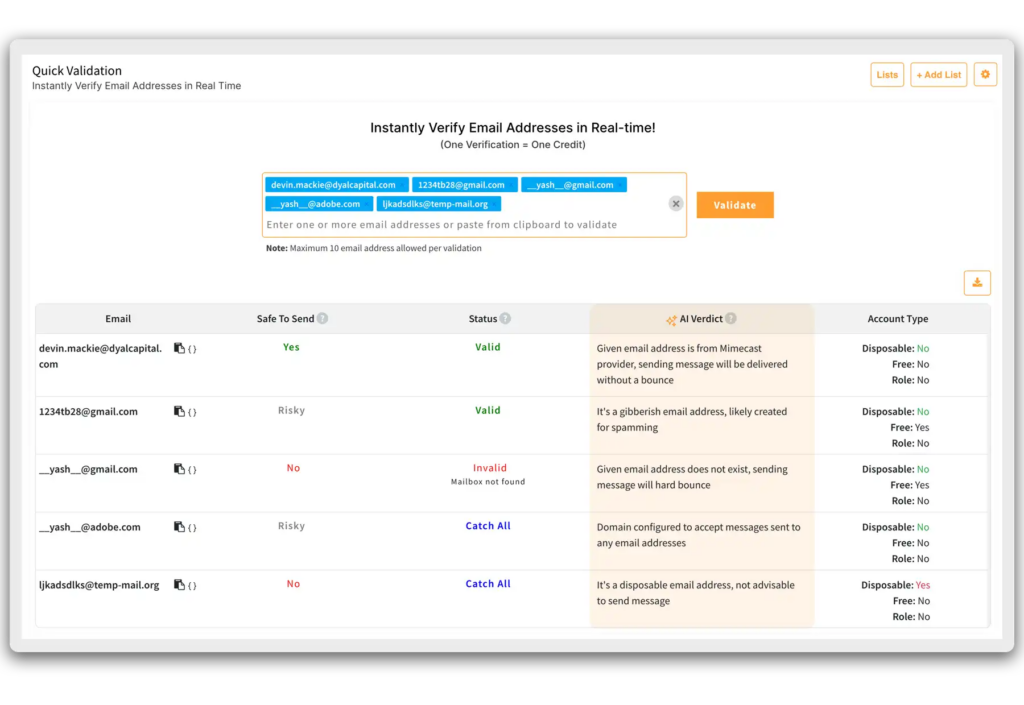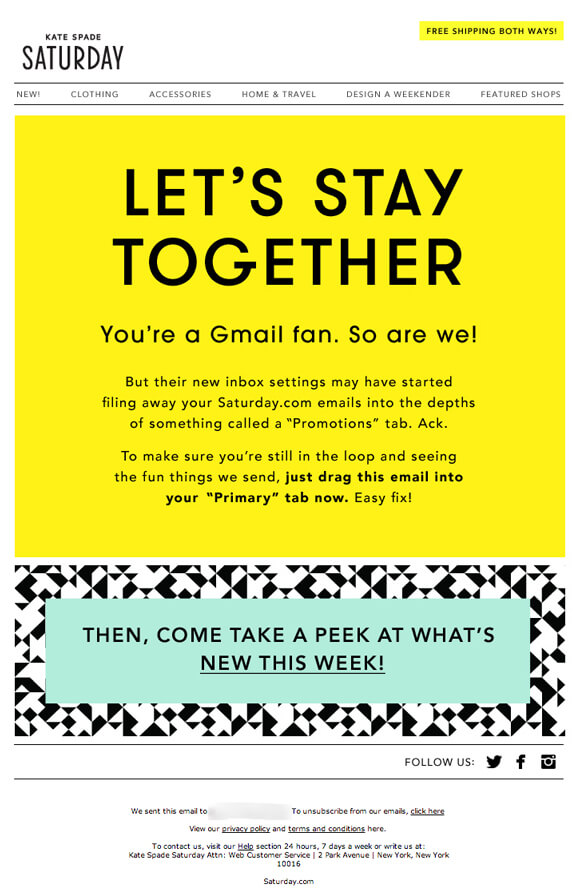- Products
- Email Verifier Verify emails addresses individually, in bulk or through API, with 99% accuracy
- Email Finder Find individual or bulk emails by entering the person & company name or domain
-
Form Guard Protect your forms from spam, bots, and invalid submissions with real-time email, phone, and name verification.
- Prospect SQL/MQL list building with high levels of personalization, real-time data enrichment and prospect search
- Clearout For SheetsVerify email addresses directly on Google Sheets with Clearout for sheets add-on
- ClearoutPhoneValidate phone numbers across 240+ countries in bulk, quick or real time validation Free Tools
- Disposable Email Checker
- Reverse LinkedIn Profile Lookup Tool
- Reverse Email Lookup Tool
- Email List Cleaner
- ResourceDEVELOPER
API
Clearout APIs are structured around REST and JSONWebhooks
Capture real-time events in your application workflowForm Guard
Real-time form validation to keep bad contacts out of your CRMKNOWLEDGE BASEGetting started
Sending campaigns without bounces is made simpleFAQ
Easily find answers to services, security and common questionsUSE CASESLead Generation
Learn how professionals generate quality leadsGUIDESPricingTransparent & flexible pricing to support pay-per-use or recurringEmail Verifier - Comparison
AI-powered email verification with 99%+ accuracy, real-time validation, and transparent risk scoringEmail Finder - Comparison
Pre-verified B2B email addresses with confidence scoring, find real person email, not role-based addressBLOGSEmail Verification ToolsHow To Build a Strong Sales Pipeline?View All Blogs
- Pricing
- Integrations
- Enterprise
- Login
What are Spam Traps? How to Keep Them Off Your Email Lists

Or why are your open rates disappointingly low?
Well it might be “spam traps” dragging you down.
Spam traps are the silent productivity killers of email marketing.
They sit quietly within your email list, harming your deliverability and reputation without you even realizing it.
Let’s explore what spam traps are, how they affect your email deliverability, and how to keep your email lists free of risky email addresses…
Table of Contents:
What Exactly Are Spam Traps?
Types of Spam Traps

- These email addresses were never used by a real person and are created solely to catch spammers.
- They are typically set up by ISPs or anti-spam organizations. If you send an email to a pristine spam trap, it’s a clear sign that you’re either buying email lists or not properly validating your list.
- How they work: Since these addresses never opted into any email list, any email sent to them is automatically considered spam. This makes pristine spam traps highly effective at catching spammers who use questionable email collection methods.
- These were once valid emails but were abandoned and reactivated as traps after a period of dormancy.
- ISPs and anti-spam organizations repurpose these addresses to catch senders who need to keep their lists clean.
- How they work: Over time, legitimate email addresses may be abandoned by their users. After a certain period of inactivity, these addresses are turned into spam traps. Emails sent to these addresses indicate that the sender is not properly maintaining their email list by removing inactive addresses.
- These are email addresses created from common misspellings or typographical errors in domain names (e.g., “@gamil.com” instead of “@gmail.com”).
- They are designed to catch senders who fail to validate or clean their email lists.
- How they work: When users accidentally enter incorrect email addresses, these typos are often caught in spam traps. Since the recipient never existed, any email sent to these addresses signals poor list hygiene.
Why Should You Care About Spam Traps?
- Decreased Deliverability:
Hitting a spam trap tells ISPs that your list hygiene is poor. This can lower your deliverability rate by up to 50%, reducing the chances of your emails landing in the inbox of genuine subscribers.
- Risk of Blacklisting:
Multiple hits can lead to IP blacklisting, severely impacting your ability to send emails. ISPs like Google and Microsoft use blacklists to filter out spammers, making it difficult for flagged IPs to regain trust
- Lower Open and Click Rates:
When emails are flagged by spam filters, they don’t reach their intended recipients, lowering engagement metrics and hurting campaign effectiveness.
- Damage to Your Brand Reputation:
Consistently poor sender reputation can damage trust with ISPs and email recipients alike. This can result in your messages being filtered out before they even reach the intended inbox
Real-Life Example
Common Causes of Spam Trap Hits
- Using Purchased or Third-Party Lists:
Purchased lists are often outdated and filled with invalid addresses, increasing spam trap risks. Instead, focus on growing an organic, permission-based list.
- Neglecting Regular List Cleaning:
Failure to clean lists regularly can lead to spam trap hits, as invalid or recycled emails remain in circulation.
- Skipping Email Validation:
Not verifying email addresses at sign-up allows typos and fake emails to slip through, raising the likelihood of spam traps.
- Inactivity of Old Contacts:
Allowing old, unengaged contacts to remain on your list can lead to hitting recycled spam traps, as some of these addresses may no longer be in use.
Ways to Avoid Spam Traps
1. Use Double Opt-In
By requiring new subscribers to confirm their email addresses, you can ensure that the people on your list genuinely want to receive your emails.

2. Regularly Clean Your Email List
In fact, regular email list cleaning can improve deliverability by up to 20%. Implementing regular cleaning routines helps to remove invalid addresses, reduce bounce rates, and improve overall email deliverability.

3. Avoid Buying Email Lists
Even if they appear large, these lists can harm your reputation more than they help. Focus on organically growing your audience for safer and more engaged subscribers.
Organic growth ensures that your audience is genuinely interested in your content, leading to higher engagement and better deliverability rates.
📌 Must read: Buying Email List? Here's Why You Should Not (+6 alternatives)
4. Use Re-engagement Campaigns for Inactive Contacts
Re-engagement campaigns help you identify inactive subscribers and give them a chance to confirm their interest in your emails.

5. Remove Hard Bounces Immediately
Removing them right away reduces the risk of future deliverability issues and avoids potential spam traps. Monitoring and promptly removing hard bounces ensures that your email list remains clean and deliverable.
6. Keep an Eye on Feedback Loops and Spam Complaints
Monitoring these complaints and responding quickly can help prevent spam traps. Feedback loops provide valuable insights into how recipients perceive your emails, allowing you to make necessary adjustments to improve your email campaigns.
7. Use Email Validation Tools
Clearout’s advanced email validation detects spam traps and maintains a high-quality list, improving deliverability and ensuring your emails reach the right audience.
By using email validation tools, you can proactively prevent spam traps from entering your list and maintain a healthy email list.
How Clearout Keeps Spam Traps Away and Your Lists Clean!
Detect and Remove Risky Addresses
Improve Deliverability
Save Time and Resources
Real-Time Verification
Detailed Reporting
Conclusion: A Verified and Clean List Is The Key
By protecting your sender reputation, you increase the chances of your emails reaching the inbox. Following best practices and using the right tools helps protect your campaigns from the negative effects of spam traps.
And when your list is healthy, your emails are more likely to be opened and engaged with.
FAQs:
Pristine Spam Traps: A role-based email like "[email protected]" placed on public websites to catch email scrapers. If you send an email to this address, it signals bad list-building practices.
Recycled Spam Traps: Any old email address like "[email protected]" could be a spam trap.
Typo Spam Traps: Email Addresses like "[email protected]" (misspelling of "[email protected]")
Recent Posts
Clearout Webhooks: Automate Workflows with Real-Time Alerts
Automate workflows with Clearout Webhooks. Receive real-time notifications for email verification, e ...
How to Build an Email Verification Workflow That Actually Works
Learn how to set up an email verification workflow that actually delivers results, maintain clean em ...
7 Actionable Ways to Improve HubSpot Chatflows Conversions
Explore 7 practical ways to improve HubSpot Chatflows conversions. Set chatflow goals, personalize c ...
B2B Email Finding Benchmarks 2025: Accuracy, Cost & ROI
Explore B2B email finding benchmarks for accuracy, cost & ROI in 2025. See how Clearout sets the sta ...
7 Best AI Email Generator Tools You Can Try for Free
Spending too much time crafting emails? Explore 7 top AI email generator tools to write professional ...
Clearout's
Form Guard
Validate email, phone & name on any forms!
- Real signups only
- Verified emails
- Valid phone numbers
- No fake names
- Cleaner CRM
- No devs needed
Email Verification, Email Finding Form Guard & Prospecting Service
Expand Your Reach By Finding & Verifying Ideal Prospects.

